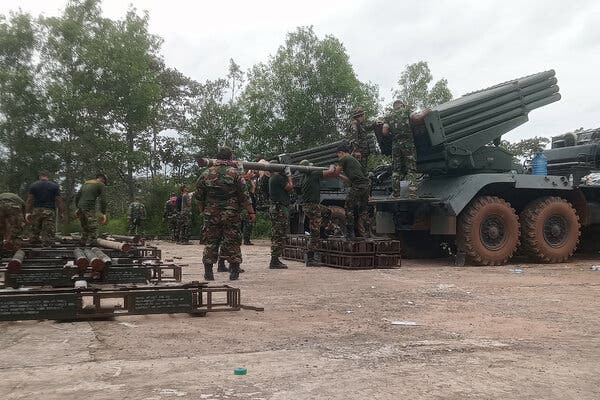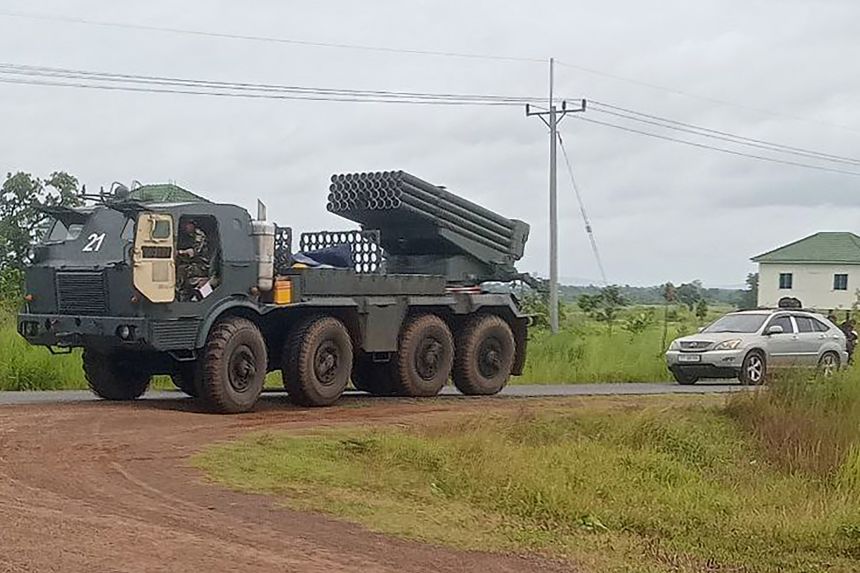The border between Thailand and Cambodia has once again become a flashpoint for armed conflict, escalating dramatically since July 24, 2025, in what is now the worst confrontation between the two countries in over a decade. Despite calls from the United States and other international actors for a ceasefire, heavy artillery exchanges continue, creating a dire humanitarian and security crisis in the region. This article examines the roots, recent developments, and broader implications of the border clashes.

The current wave of violence ignited after a landmine explosion on July 23, 2025, which severely injured a Thai soldier in Ubon Ratchathani province near the disputed border area. The following day, artillery exchanges erupted at multiple points along the border, particularly around the Preah Vihear Temple and surrounding disputed territories, a location that has long symbolized nationalist tensions and competing territorial claims stemming from colonial-era treaties and a contentious International Court of Justice (ICJ) ruling in 1962 awarding the temple to Cambodia. Both nations accuse each other of igniting hostilities and violating sovereignty—a dynamic fueled by historical grievances and recent political provocations, including diplomatic expulsions on the eve of the fighting.
The fighting has been intense and widespread, taking place in at least a dozen locations along the border. As of the latest reports, the death toll has reached at least 32 people, including both civilians and soldiers on each side, with dozens more wounded. The hostilities have forced over 200,000 people to flee their homes, with mass evacuations affecting roughly 138,000 displaced in Thai border districts and 38,000 in Cambodian territories near the line of conflict. Civilian infrastructure, including homes, religious sites, hospitals, and schools, have suffered extensive damage due to shelling and rocket strikes. Both governments have implemented emergency measures: Thailand declared martial law in several border provinces and closed hundreds of schools and medical facilities to protect civilians.
Despite the grave situation and international pressure—including public appeals by U.S. President Donald Trump for ceasefire talks—the exchanges of fire have continued into a fourth day and beyond. Thai authorities claim that Cambodia has persisted in bombarding civilian areas in provinces such as Surin and Sisaket, undermining conditions for ceasefire negotiations. In response, Cambodian forces report retaliatory shelling of Thai military positions and border villages, including the use of drones, tank artillery, and cluster munitions. The Preah Vihear Temple, a UNESCO World Heritage site, remains dangerously close to the conflict zone, raising fears about cultural and historical preservation amidst the violence.
The underlying causes of this conflict trace back over a century to the Franco-Siamese treaties (1904–1907) and colonial-era divisions of territory. Although the International Court of Justice’s decision awarded the temple to Cambodia, the surrounding land remains contested. Nationalist sentiments and political rivalries in both countries have periodically ignited border clashes, with a notable escalation in tensions from 2008 to 2011 and again earlier this year when Thai troops stopped Cambodian visitors from singing their national anthem at the disputed temple. The recent flare-up was foreshadowed by both sides reinforcing their army posts and diplomatic breakdowns, including Thailand recalling its ambassador and expelling Cambodian envoys in response to cross-border violence.
Geopolitically, the clash complicates Southeast Asian regional stability prospects. ASEAN and the United Nations have urged both sides to halt fighting and seek peaceful resolution, but entrenched nationalism, fragile governments, and strategic interests—including the influence of external powers such as China and the U.S.—add layers of complexity. The humanitarian toll is significant, with civilians caught in the artillery fire, displacement crises, and the destruction of essential services. Human rights organizations have condemned the use of explosive weapons in populated areas and called for urgent measures to protect civilians and uphold international humanitarian law.
Efforts for diplomacy are underway. Talks have been scheduled between Thai and Cambodian leaders in Malaysia in the coming days, aiming to broker a ceasefire and address the root causes of the conflict. However, skepticism remains high, given the ongoing violence and mutual accusations. Analysts note that for durable peace, both sides will need to engage in sincere dialogue that acknowledges historical grievances, territorial claims, and current security concerns, while ensuring civilian protection. Without such efforts, the risk of a protracted and intensified conflict threatens to destabilize the region further.
In conclusion, the escalation of violence along the Thailand-Cambodia border is a stark reminder of unresolved historical tensions and the fragile nature of peace in contested regions. Despite international efforts to mediate, fighting persists, driving a humanitarian crisis with grave consequences for civilians. The pathway to peace will require courageous leadership, genuine negotiations, and sustained international support to de-escalate tensions and foster lasting stability in Southeast Asia.

